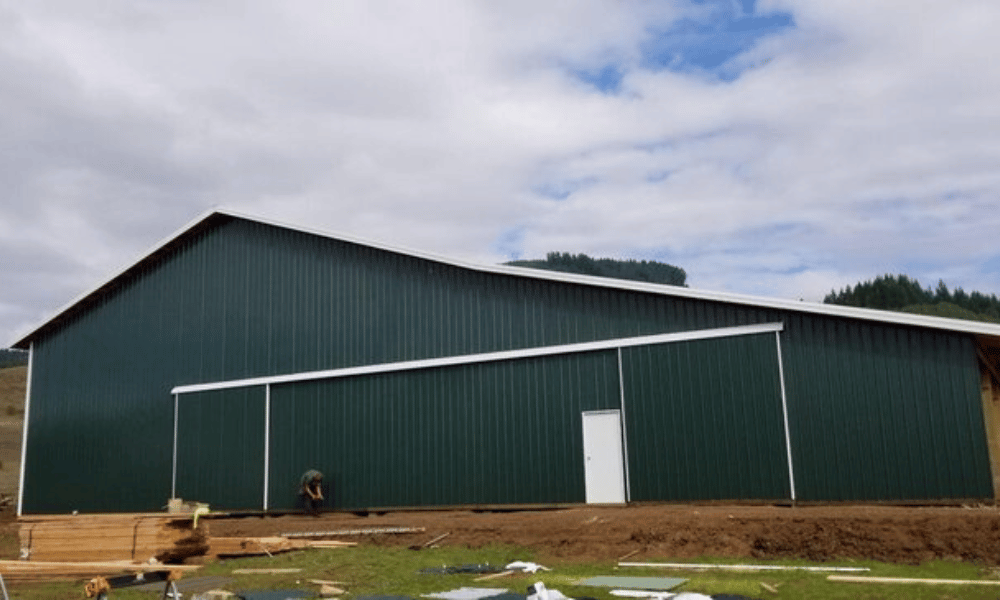When it comes to constructing buildings capable of standing the test of time and nature's fury, pole buildings have emerged as an optimal solution. These structures are not just versatile and cost-effective; they offer a plethora of advantages specifically tailored for challenging weather conditions. In this comprehensive article, we'll delve into the numerous benefits of using pole buildings, their construction methodologies, and how they perform under various environmental stresses.
Understanding Pole Buildings
What Are Pole Buildings?
Pole buildings, also known as post-frame constructions, utilize vertical poles embedded in the ground to support the structure. Unlike traditional methods that rely on a foundation or basement, these buildings distribute weight through their poles and framing.
Key Characteristics of Pole Buildings
Construction Methodology: Built with large timber or steel posts. Flexibility: Easily customizable to meet specific needs. Cost-Effectiveness: Reduced material costs compared to conventional construction. Durability: Resistant to harsh weather conditions.The Advantages of Using Pole Buildings in Challenging Weather Conditions
Pole buildings are engineered to withstand various environmental challenges such as heavy snow loads, high winds, and extreme temperatures. Here are several key advantages:
1. Structural Integrity in High Winds
One of the most significant benefits of pole buildings is their ability to withstand high wind speeds. The unique design allows for flexibility without compromising strength.
Wind Resistance Features
- Aerodynamic Shapes: Many pole building designs incorporate sloped roofs that reduce wind resistance. Anchoring Systems: Deeply embedded poles provide a sturdy base against gusts.
2. Snow Load Management
In areas where snowfall is heavy, pole buildings shine due to their strong structural framework designed to handle significant snow loads without sagging or collapsing.
Snow Load Considerations
- Roof Pitch: Steeper roofs allow snow to slide off easily. Reinforced Framing: Extra supports can be added based on local snow load requirements.
3. Thermal Efficiency
Pole buildings can be engineered with insulation systems that keep interiors warm during winter and cool during summer, making them energy-efficient options for varied climates.
Energy-Efficient Solutions
- Insulated Panels: Use of insulated metal panels adds thermal resistance. Reflective Barriers: Installing reflective barriers minimizes heat loss or gain.
4. Cost Savings Over Time
Investing in pole buildings often results in long-term savings due to lower maintenance costs and energy efficiency.
Financial Benefits
- Reduced heating/cooling expenses due to better insulation. Lower insurance premiums owing to structural resilience against natural disasters.
Design Flexibility for Various Needs
5. Versatile Applications
From agricultural storage to residential spaces, pole buildings can adapt to different functions without major redesigns or additional costs.
Common Uses
- Warehouses Garages Workshops Livestock barns
6. Customization Options
Homeowners and business operators appreciate the ability to customize pole building designs according to specific needs—be it size, layout, or functionality.
Customization Features
- Variety of sizes and layouts Choice of exterior finishes (wood siding, metal sheeting) Multi-purpose configurations
Environmental Sustainability
7. Eco-Friendly Materials
Many pole building projects use sustainable materials like treated wood from renewable sources that contribute positively toward environmental conservation efforts.
Sustainable Practices
- Sourcing local materials reduces transportation emissions. Utilizing recycled materials when possible enhances sustainability.
8. Minimal Land Disturbance
The construction process for pole buildings typically requires less land disturbance than traditional foundations which helps preserve surrounding ecosystems.
Safety Features in Extreme Conditions
9. Earthquake Resilience
In earthquake-prone areas, the flexible nature of pole building designs can minimize damage during seismic activities compared to rigid structures.
Seismic Design Strategies
Reinforced joints at critical points. Flexible connections between beams and columns.Maintenance Considerations
10. Low Maintenance Requirements
Unlike traditional brick-and-mortar structures that may require frequent repairs due to cracking or settling issues, pole buildings often demand far less upkeep over time.
Durability Factors
- Treated wood resists rot and pests. Metal roofing options provide longevity against weather extremes.
FAQ Section
1. Are pole buildings suitable for residential use?
Absolutely! Many homeowners choose pole buildings for garages, workshops, or even homes because they offer flexibility in design and space utilization.

2. How do I ensure my pole building is built correctly?
Hiring experienced contractors who specialize in pole structures ensures your building meets all necessary codes and standards while providing reliable protection against challenging weather conditions.
3. What types of roofs are best for pole buildings?
Gable roofs are popular due to their ability to shed snow effectively while providing ample height inside the structure; however, other styles like hip roofs can also work well based on your climate needs.
4. Can I insulate my pole building?
Yes! Insulating your structure is highly recommended for temperature control and energy efficiency; various insulation options are available depending on your budget and goals!
5. Do I need a permit for a pole building?
Most areas require permits for new constructions regardless of type; checking local regulations before starting your project is essential!
6. How long does it take to build a pole barn?
Construction timelines vary based on size but generally range from a few weeks up to several months depending on complexity—it's best always consult with builders beforehand!
Conclusion
In conclusion, the advantages of using pole buildings in challenging weather conditions cannot be overstated—from their impressive structural integrity against wind and snow loads to their energy efficiency and low maintenance demands. As we've explored through various headings and sub-headings throughout this article, these versatile structures stand out as a formidable choice for both commercial and residential applications alike!
Whether you're looking at constructing a new garage or considering larger projects like agricultural barns or warehouses—pole buildings offer numerous benefits that justify their growing popularity among builders across diverse climates! Therefore when choosing your next project consider investing wisely by opting for innovative solutions that will serve you well regardless if Mother Nature throws her https://www.deanlindseyconstruction.com/pole-barn-garages-and-workshops worst at us!